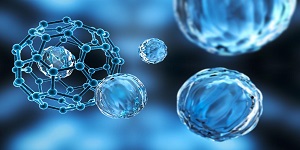
Nanomat 2021

Theme: Current Trends and Future Technologies of Nanomaterials
Webinar on Nanomaterials 2021 Scheduled on July 17, 2021 in Dubai, UAE. The goal of the webinar is therefore to bring together international researchers from industry and academia, from authorities and other institutions, from all over the world, to convey the information and share the latest developments across the immense and distinct fields of Nanomaterials.
The event has the objective of creating an international forum for academics, researchers and scientists from worldwide to discuss worldwide results and proposals regarding to the soundest issues related to Nanoamaterials. Everyone who explores to strengthen their knowledge and gain extended about advanced technical cleverness is welcome to present/get new ideas. We provide a good opportunity by admiring your updated research and also by publishing it in our respective journals. Finally, on behalf of the organizing committee, I would like to invite all the scientific community to participate in this Webinar.
The incredibly fast progression of advancements is commonly used to meet current and future challenges facing the scientific community. Advanced Nanomaterials are found significant in different applications. The assessment on forefront materials offers from for their mix and use of their novel properties. In such way, this part gives a graph of varying shows for consolidating advanced nanomaterials with extraordinary properties. Nanomterials are the materials of which a solitary unit is assessed 1 and 1000 nanometers anyway is generally from 1 to 100 nm. Nanomaterials requests concerning the gathering of techniques related to materials science and Nanotechnology gain ground in the metrology and the mix of materials that have been made in help of microfabricationexamine. The materials with the structure in the Nano scale reliably have unique optical, electronic or mechanical property.
2. Synthesis and Characterization of Nanomaterials
Synthesis and Characterization of Nanomaterials plays a crucial role in material science and building. Nanoparticles exist in various shapes depending upon the synthesis procedures. Nanostructured materials indicating various morphologies, for example, nanoparticles, nanotubes, nanowires, nanoflowers, nanocubes, and so forth have been broadly contemplated and have demonstrated extensive mechanical incentive in numerous applications. Morphological control in Nanomaterials has a great deal of centrality, in light of its striking properties from infinitesimal tests to nanoelectronic frameworks. These practical nanomaterials guarantee the chance of manufacturing gadgets in the zone of optics, hardware, attraction, and photonics. Various states of nanomaterials incorporate nanospheres, nanocube, nanowires, nanoreef, nanoclusters, and nanotubes. Microstructural characterization gives data about the morphology of various stages, number of stages, substance arrangement, and crystallographic deserts. Different properties of nanomaterials can be finely tuned dependent on its morphology, accordingly a definite report on the morphology of nanomaterials and its impact on the optical, electrical, attractive, electronic, and warm properties is required. Different morphological characterization strategies, for example, nuclear power magnifying lens, filtering electron magnifying lens, transmission electron magnifying instrument, and so forth were utilized to assess the particles in the nanoregime.
A Composite Materials is made by consolidating at least two materials – frequently ones that have very various properties. The two materials cooperate to give the composite remarkable properties. In any case, inside the composite you can without much of a stretch differentiate the various materials as they don't disintegrate or mix into each other. The inconceivable good situation of Composite Materials is that their properties can be arranged ahead of time. Composite Materials properties are essentially dependent upon the choice of matrix and restoring stage, shape, heading, diminishing stage and volume bit of stages.
In the large field of Nanotechnology, polymer network based nanocomposites have become a prominent zone of current research and development. Shed earth based nanocomposites have ruled the polymer writing yet there are countless other noteworthy regions of current and developing interest. This audit will detail the innovation associated with peeled mud based nanocomposites and likewise incorporate other significant regions including hindrance properties, combustibility opposition, biomedical applications, electrical/electronic/optoelectronic applications and power device interests. The significant question of the ''nano-impact'' of nanoparticle or fiber incorporation comparative with their bigger scope partners is tended to comparative with crystallization and glass progress conduct. Obviously, other polymer (and composite)- based properties derive benefits from nanoscale filler or fiber addition and these are addressed.
5. Biomaterials and Nano Biotechnology
Bio-based materials are produced using substances got from living life forms which have an expansive scope of uses in medication, bundling, shopper products, hardware, transportation, development, and green innovations. Nanotechnology utilizes biomimetic or bio-propelled cycles to plan nanostructured materials for science applications. Advancements in nanobiomaterials are changing our imminent to distinguish natural complexities and discover answers for organic issues by creating biomimetic and building procedures. This section expects to give all parts of essential and applied exploration identified with bio-based nanostructured materials including polysaccharides (chitin, chitosan, and cellulose), carbon, plant proteins, keratin, phage, and common bioceramics and their biomedical applications.
6. Nanotechnology for Energy and Environment
Nanotechnological things, cycles and applications are needed to contribute environmental and climate protection by saving unrefined materials, imperativeness and water similarly as by decreasing ozone draining substances and risky wastes. Using nanomaterials in this manner ensures certain regular points of interest and practicality impacts. In any case, that Nanotechnology directly accepts a genuinely subordinate part in regular protection, whether or not it be in research or in helpful applications. Regular planning associations themselves join simply limited importance to Nanotechnology in their specific fields.
7. Nano-optics
Nano-optics focuses on the appreciation of optical marvels on the nanometer scale, for instance close or past the diffraction farthest reaches of light. It is a growing new field of study, enlivened by the brisk advancement of nanoscience and nanotechnology and by its prerequisite for acceptable gadgets and techniques for assembling, control and depiction at the nanometer scale. Strikingly, Nano-optics even starts before the example of nanotechnology by more than 10 years. An optical accomplice to the inspecting tunneling amplifying instrument (STM) was shown in 1984 and optical objectives had been cultivated that were generally past the diffraction farthest reaches of light. These early tests began a field from the start called close field optics since it was made sense of it quickly that the joining of near fields in the issue of optical imaging and related spectroscopies holds ensure for achieving self-decisive spatial objectives henceforth offering permission to optical tests on the nanometer scale.
8. Nanomaterials in Food, Agriculture and Water
Nanotechnology is a potential locale that changes practically every everyday issue and is foreseen to transform into a huge financial force soon. Starting late, nanomaterials have gotten phenomenal thought for their properties at nanoscale framework and their applications in various zones basically, agriculture and food sectors. The nanomaterials are dissipated or solid particles, with a size extent of 1–100 nm. Starting late, there has been an extended assessment work here to coordinate nanomaterials using various strategies. The usages of trademark biomolecules using ‘green’ approach expect key capacity in the blend of nanomaterials having different shapes and sizes. Further this 'green mix's system limit the cost just as cutoff the need of hazardous manufactured substances and animates mix of greener, safe and earth pleasant nanoparticles, the current review revolve around inspects reliant on the biosynthesis of nanoparticles using biomolecules, for instance, plants, microorganisms, parasites, etc. The substance summarizes the progressing work done worldwide by renowned experts in domain of biosynthesis of nanomaterials. It moreover analyzes the normal uses of naturally mediated nanomaterials in the domains of cultivating and food and a fundamental evaluation of challenges inside this field.
9. Nanophysics
The nanophysics is somewhere close to the size sizes of quantum mechanics and normally obvious material science regulated by the laws of Newton and Einstein. The correct significance of nanophysics is the material study of structures and collectibles with estimations in the nanometer run or of miracles occurring in nanoseconds. Momentum physical techniques whose focal are made in material science research offices have become in a general sense noteworthy in nanoscience nanophysics joins different requests, using theoretical and test techniques to choose the physical properties of materials in the nanoscale size range. Entrancing properties consolidate the fundamental, electronic, optical, and warm direct of nanomaterials; electrical and warm conductivity; the forces between nanoscale objects; and the advancement among customary and quantum lead. Nanophysics has now become a self-governing piece of material science, at the same time wandering into various new regions and playing a essential capacity in fields that were already the space of building, compound, or life sciences . Nanoscience and nanotechnology are connected to relating and abusing ponders for materials having one, a couple of estimations diminished to the nanoscale. Accomplishments in nanotechnology require a firm setting up in the guidelines of nanophysics. It is intended to fulfill a significant explanation. Nanophysics plans to interface scientists with novel interests to begin interdisciplinary undertakings likewise, join the theory and technique of various fields into their work.
10. Materials: Characterization and Testing
Materials Characterization and Testing is a key capacity in evaluating and guaranteeing the quality, properties, and conduct of a polymer or composite, and is along these lines a significant advance in ensuring the quality and accomplishment of your completed item. Polymer portrayal and material portrayal happen at the nano, nuclear degree of a material, breaking down the cooperations and conduct of its "building blocks" to give the data you have to decide if the material is fit to your necessities.Characterization, when utilized in materials science, refers to the wide and general cycle by which a material's structure and properties are examined and estimated. It is a crucial cycle in the field of materials science, without which no logical comprehension of building materials could be ascertained. The extent of the term regularly varies; a few definitions limit the term's utilization to methods which study the tiny structure and properties of materials, while others utilize the term to allude to any materials investigation measure including plainly visible procedures, for example, mechanical testing, warm examination and thickness calculation. The size of the structures saw in Materials characterization ranges from angstroms, for example, in the imaging of individual molecules and substance bonds, up to centimeters, for example, in the imaging of coarse grain structures in metals.
The current market patterns and future development chances of nanomaterials, in businesses, for example, paints and coatings, cements and sealants, medical care, vitality, gadgets and customer merchandise, individual consideration, and others. It likewise accentuates on different kinds of nanomaterials that are economically accessible in the market, specifically, carbon based (carbon nanotubes, fullerenes and POSS, and graphene), metal and non-metal oxides (titanium dioxide, zinc oxide, silicon dioxide, aluminum oxide, cerium oxide, antimony tin oxide, copper oxide, bismuth oxide, cobalt oxide, iron oxide, magnesium oxide, manganese oxide, and zirconium oxide), metals (silver, gold, nickel, and quantum dabs), dendrimers, nanoclay, and nanocellulose. It likewise breaks down the current market patterns of nanomaterials in various topographies and recommends the future development openings by dissecting government guidelines and strategies, which can additionally build the customer acknowledgment in that district.
As shown by the perspective of driving associations, the components that drive the enthusiasm for nanomaterials in various end-customer undertakings are creating enthusiasm for inventive work, extending universality of nanomaterials in various application adventures, and the great physio-mixture properties of nanomaterials. Nanomaterials are commonly included little adds up to improve the display of the base material. In any case, factors, for instance, serious natural rules and over the top expense of nanomaterials may hamper the market improvement. Presently, the paints and coatings, concretes and sealants, devices and customer product, and individual thought partitions are the critical end-customer markets for nanomaterials.
Nanotechnology conveys a huge effect, and fills in as a progressive and gainful innovation across different modern spaces, including correspondence, medicine, transportation, agribusiness, vitality, materials and assembling, shopper items, and family units. Developing use cases and application is relied upon to be one of the key components contributing towards the development of nanotechnology market size.
Additionally, various relationship around the globe are placing assets into nanotechnology market and its rising applications. For instance, in 2018, Osaka University-drove masters, in a joint investigation adventure with The University of Tokyo, Kyoto University, and Waseda University, manufactured fused quality logicchips called quality nanochips. Using consolidated segments on the nanochips, these autonomous nanochips can turn characteristics on and off inside a singular chip, preventing unintended crosstalk. Moreover, nanoscale sensors and contraptions may give commonsense incessant checking of the essential uprightness and execution of frameworks, tunnels, rails, halting structures and black-tops after some time. Likewise, nanoscale sensors, particular devices, and various headways enabled by nanoelectronics maintain a redesigned transportation structure that can talk with vehicle-based systems to help drivers with keeping up way position, dodge crashes, modify go courses to avoid blockage, and improve drivers' interfaces to locally accessible equipment. All of these components are depended upon to be critical nanotechnology market floats universally.
America
- A.J. Drexel Nanotechnology Institute
- Arizona State University - Biodesign Institute
- Boise State University - Nanoscale Materials and Devices Group
- Rice University
- University of Pennsylvania
- Duke University
- Johns Hopkins University
- Carnegie Mellon University
- Stevens Institute of Technology
- University of Washington-Seattle Campus
- University of Minnesota-Twin Cities
- University of Denver
- Arizona State University-Tempe
- Michigan Technological University
- University of Utah
Europe
- UNIVERSITY OF CAMBRIDGE
- Jagiellonian University
- Peter the Great St. Petersburg Polytechnic University
- University Bourgogne Franche-Comté
- BAUMAN Moscow State Technical University
- Linköping University
- KTH Royal Institute of Technology
- Aalto University
- Politecnico di Milano
- Bilkent University Graduate School of Engineering and Science
- Sapienza University of Rome
- St. Petersburg Academic University of the Russian Academy Of Sciences
Asia Specific
- Nanyang Technological University
- Tsinghua University
- Peking University
- University of Science and Technology of China
- Georgia Institute of Technology
- Massachusetts Institute of Technology (MIT)
- Stanford University
- Soochow University (China)
- National University of Singapore
- Harvard University
- University of California, Berkeley
- Fudan University
- Zhejiang University
- Northwestern University
- Korea Advanced Institute of Science and Technology
- Huazhong University of Science and Technology
- Nanjing University
- Seoul National University
Middle east :
- Khalifa University of Science, Technology and Research
- The Khalifa Semiconductor Research Center
- Ras Al Khaimah Center for Advanced Materials
- Masdar Institute of Science and Technology
- United Arab Emirates University
- Bilkent University - Master of Science in Materials Science and Nanotechnology
- Bilkent University - Nanotechnology Research Center (NANOTAM)
- Middle East Technical University - MSc Micro and Nanotechnology
- Middle East Technical University - PhD Micro and Nanotechnology
- National Nanotechnology Research Center at Bilkent University
- Sabanci University - Nanotechnology Research and Application Center (SUNUM)
- Toros University - Nanomaterial Production Laboratory
Nanomaterials will lead to a radically new approach to manufacturing materials and devices. Faster computers, advanced pharmaceuticals, controlled drug delivery, biocompatible materials, nerve and tissue repair, crackproof surface coatings, better skin care and protection, more efficient catalysts, better and smaller sensors, even more efficient telecommunications, these are just some areas where nanomaterials will have a major impact.
Meetings International has organized International Webinar on Nanomaterials Research on June 17th, 2021.The Theme for the Webinar was “Current Trends And Future Technologies Of Nanomaterials”. They have conducted Keynote speeches on Advanced Nanomaterials and Composite Materials, Polymer Nanotechnology, Plenary talks on Biomaterials and Nano Biotechnology, Nanotechnology for Energy and Environment and different sessions related to the Webinar. Presentations on Nano-optics. Panel discussions on Nanomaterials in Food, Agriculture and Water, Nanophysics and the latest research developments in the field of Materials: Characterization and Testing.
- Advanced Nanomaterials
- Synthesis and Characterization of Nanomaterials
- Composite Materials
- Polymer Nanotechnology
- Biomaterials and Nano Biotechnology
- Nanotechnology for Energy and Environment
- Nano-optics
- Nanomaterials in Food, Agriculture and Water
- Nanophysics
- Materials: Characterization and Testing
6 Renowned Speakers
Mohsen Sheikholeslami
Babol Noshirvani University of Technology, Babol
Iran
Sharda Sundaram Sanjay
An Autonomous Constituent PG College of University of Allahabad
India
Roger M. Leblanc
University of Miami
USA
You Qiang
University of Idaho, Moscow
USA
S. Girish Kumar
CMR University, Karnataka
India
Margarita Sanchez-Dominguez
Margarita Sanchez-Dominguez, PhD, CIMAV Monterrey
Mexico


























































































































